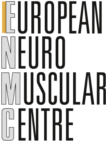 Dermatomyositis, a rare autoimmune disease, is one of the idiopathic inflammatory myopathies (or myositis). The current diagnostic criteria for this disease are solely clinical and histological (perifascicular atrophy, vasculopathy), and do not take into account myositis-specific autoantibodies identified in the last few years. For example, they are not present in the myositis classification published in 2017 by the American College of Rheumatology and the European League Against Rheumatism (ACR/EULAR), which does not recognise the heterogeneous nature of the dermatomyositis patient population.
And yet, the five autoantibodies currently known to be specific to dermatomyositis (anti-TIF1-γ, anti-NXP2, anti-Mi2, anti-MDA5 and anti-SAE) are each associated with a distinct clinical phenotype. Systematically searching for these autoantibodies has not only a diagnostic benefit, but also a therapeutic and prognostic benefit. For example, anti-TIF1-γ and anti-NXP2 are associated with an elevated risk of cancer in adults, and with more frequent recurrence in children.
Dermatomyositis, a rare autoimmune disease, is one of the idiopathic inflammatory myopathies (or myositis). The current diagnostic criteria for this disease are solely clinical and histological (perifascicular atrophy, vasculopathy), and do not take into account myositis-specific autoantibodies identified in the last few years. For example, they are not present in the myositis classification published in 2017 by the American College of Rheumatology and the European League Against Rheumatism (ACR/EULAR), which does not recognise the heterogeneous nature of the dermatomyositis patient population.
And yet, the five autoantibodies currently known to be specific to dermatomyositis (anti-TIF1-γ, anti-NXP2, anti-Mi2, anti-MDA5 and anti-SAE) are each associated with a distinct clinical phenotype. Systematically searching for these autoantibodies has not only a diagnostic benefit, but also a therapeutic and prognostic benefit. For example, anti-TIF1-γ and anti-NXP2 are associated with an elevated risk of cancer in adults, and with more frequent recurrence in children.
The field of dermatomyositis is evolving
A seminar of the European Neuromuscular Centre (ENMC) focused, in mid-December 2018, on the development of an updated dermatomyositis classification that takes into account advances in knowledge. This meeting occurred in Amsterdam (the Netherlands), and involved 22 experts from 12 countries, in which France was represented by Professors Olivier Benveniste (Paris) and Olivier Boyer (Rouen), and Doctors Yves Allenbach (Paris) and Cyril Gitiaux (Paris).
The seminar participants reached a consensus, and proposed: ·
- the inclusion, henceforth, of the 5 specific autoantibodies in the diagnostic criteria for dermatomyositis;
- the classification of the disease into six distinct subtypes (anti-TIF1-γ DM, anti-NXP2 DM, anti-Mi2 DM, anti-MDA5 DM, anti-SAE DM and autoantibody-negative DM), that may have differing underlying mechanisms;
- the retention of the diagnosis of dermatomyositis only if there is skin involvement, thus excluding the so-called “sine dermatitis” forms;
- the exclusion of a diagnosis of dermatomyositis if antisynthetase, anti-HMGCR or anti-SRP autoantibodies are not present, even if the patient presents suggestive skin lesions;
- the taking into account of the new classification in future clinical trials on dermatomyositis: inclusion of patients with a particular autoantibodies or the creation of subgroups according to autoantibody status, exclusion of patients with antisynthetase syndrome, etc.
All of these proposals are likely to progress the treatment and the follow-up of patients, although the classification proposed at the conclusion of the ENMC seminar still has to be validated over large cohorts.
